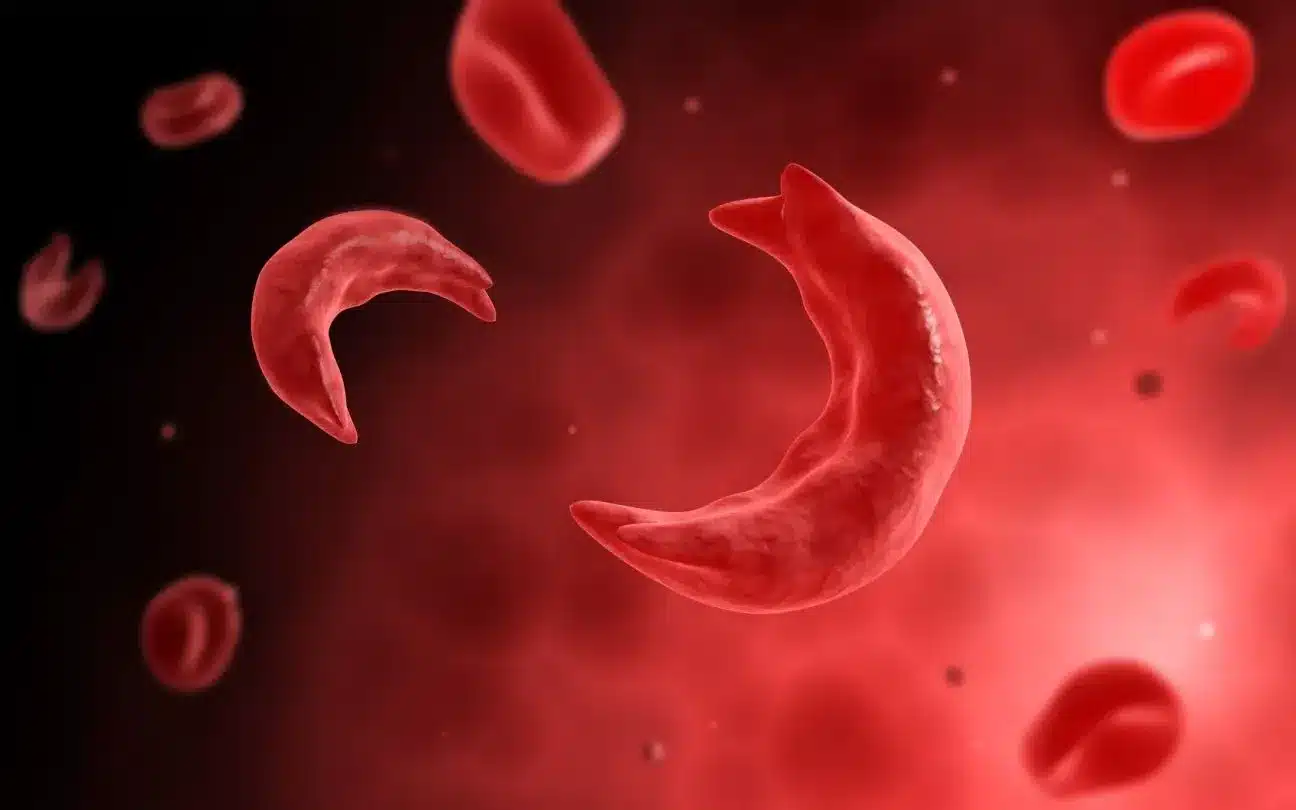About Sickle Cell Disease (SCD):
- It is an inherited blood disorder.
- It is marked by flawed hemoglobin.
- Hemoglobin is the molecule in red blood cells (RBCs) that carries oxygen to the tissues of the body.
- How does it affect blood flow?
- Normally, RBCs are disc-shaped and flexible enough to move easily through the blood vessels.
- People with SCD have atypical hemoglobin molecules called hemoglobin S, which can distort RBCs into a sickle, or crescent, shape.
- These sickled RBCs do not bend or move easily and can block blood flow to the rest of the body.
- SCD interferes with the delivery of oxygen to the tissues.
- What causes it?
- The cause of SCD is a defective gene, called a sickle cell gene.
- A person will be born with SCD only if two genes are inherited—one from the mother and one from the father.
- Symptoms:
- Early stage: Extreme tiredness or fussiness from anemia, painfully swollen hands and feet, and jaundice.
- Later stage: Severe pain, anemia, organ damage, and infections.
- Treatments:
- A bone marrow transplant (stem cell transplant) can cure SCD.
- However, there are treatments that can help relieve symptoms, lessen complications, and prolong life.
- Gene therapy is also being explored as another potential cure.
- The UK recently became the first country to approve gene therapy treatment for SCD.
Q1: What is a bone marrow transplant?
A bone marrow transplant is a procedure that infuses healthy blood-forming stem cells into your body to replace bone marrow that’s not producing enough healthy blood cells. A bone marrow transplant is also called a stem cell transplant.
Source: Healthy Returns: Pfizer pulls sickle cell disease drug from markets – here’s why it matters
Last updated on August, 2025
→ UPSC Mains Admit Card 2025 will be released soon at www.upsc.gov.in.
→ UPSC Mains 2025 will be conducted on 22nd August 2025.
→ UPSC Notification 2025 was released on 22nd January 2025.
→ UPSC Calendar 2026 is released on 15th May, 2025.
→ UPSC Prelims Question Paper 2025 and Unofficial Prelims Answer Key 2025 are available now.
→ UPSC Prelims Result 2025 is out now for the CSE held on 25 May 2025.
→ The UPSC Vacancy 2025 were released 1129, out of which 979 were for UPSC CSE and remaining 150 are for UPSC IFoS.
→ UPSC Prelims 2026 will be conducted on 24th May, 2026 & UPSC Mains 2026 will be conducted on 21st August 2026.
→ The UPSC Selection Process is of 3 stages-Prelims, Mains and Interview.
→ UPSC Result 2024 is released with latest UPSC Marksheet 2024. Check Now!
→ UPSC Toppers List 2024 is released now. Shakti Dubey is UPSC AIR 1 2024 Topper.
→ Also check Best IAS Coaching in Delhi















